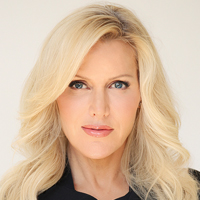Editor’s note: Kimberly Foss is a longtime columnist with Rethinking65. To read more of her columns, click here.

Most of us understand that women face different healthcare challenges in retirement than men. Many of them have fewer financial resources to cover healthcare costs and other expenses. And because women statistically live longer than men, they are more likely to have the types of healthcare needs that accompany advanced age.
According to researchers at Harvard University, the life expectancy gap between women and men has widened to about six years. Yet an analysis using data from the Bureau of Labor Statistics indicates that the median annual income of women age 65 and older is just $48,152, compared with $62,400 for men that age. That’s about 77% as much.
Younger women earn about 96.6% as much as their male counterparts. The big percentage decline by the time women reach retirement age is likely attributable in part to years spent out of the workforce as caregivers, either to children or aging relatives. This task still falls disproportionately on women. Those who spend fewer years in the workforce often find themselves at a disadvantage for not only being able to save but to also invest.
One of the factors that can help even the healthcare playing field for women is Medicare. It is also an area where we, as trusted advisors, can provide tremendous help.
Medicare is the No. 1 health benefit for most retirees but the coverage structure is complicated. More than half of Americans covered by Medicare are women, and the proportion increases with age. So, for our female clients, it is even more important that we provide informed and accurate counsel on this vital healthcare resource.
Women transitioning to retirement also have a number of confusing choices to make regarding which Medicare supplement insurance plan is best for them. According to the WellCare survey, women are 29% more likely than men to find the process of reviewing and comparing plans to be “painful and frustrating.”
Medicare Basics
It’s important for us to help ensure that our female clients know what is covered by the various parts of Medicare; we cannot simply assume they do. Here’s a quick overview to share with them:
- Medicare Part A (“Basic Medicare”) covers most hospital costs and is free for most enrollees because either they or their spouse paid Medicare taxes for years.
- Medicare Part B covers outpatient costs, doctor visits and most diagnostic tests. Enrollees pay a monthly premium based on income.
- Medicare Part C (“Medicare Advantage”) is offered by private insurers subject to government oversight and can replace many of the benefits offered by Medicare Parts A, B, and (usually) D, in addition to other coverages not offered by Medicare;
- Medicare Part D covers prescription drugs, for which enrollees pay a monthly premium that varies by plan. It is provided by private companies who are contracted through the government.
For women, Part B may deserve special attention since this is the part of the plan that covers preventive services for many of the health conditions to which older women are especially prone. This includes bone mass measurements, cardiovascular screenings, screenings for cervical and vaginal cancers, and other preventive diagnostics of special importance to women.
For Employed Women
Some women 65 or older may still be working and covered by a company plan. If the company has 20 or more employees, it typically offers coverage that meets Medicare requirements for persons working past normal Medicare enrollment age. This means that employees 65 or older who would otherwise need to enroll in Medicare to avoid a late enrollment penalty can elect to remain under the company coverage; they will not be charged a late enrollment penalty.
However, as our clients 65 and over begin to plan for retirement, we need to make sure that they understand the transition from their company plan to Medicare. If the company plan is still available to them after retirement, it will probably become secondary coverage and Medicare will likely become their primary coverage.
Spousal Coverage Concerns
If your client has a younger spouse who is currently covered under the client’s company plan, we need to help our client understand their options for maintaining healthcare coverage for their spouse after Medicare becomes our client’s primary coverage.
For example, I have a client age 65 who is a senior executive at her company. Her spouse is a few years younger than she, so is not yet eligible to enroll in Medicare; he is covered on her company plan. I have advised her to remain on the company plan as long as she continues to work. We have also spoken to her HR department to confirm that when she retires, she will be able to retain her husband’s coverage until he reaches Medicare enrollment age.
When my client retires, Medicare will become her primary coverage and the company plan for retirees will be her secondary coverage. Her spouse will be covered by the company plan until he reaches 65, whereupon he will switch over to Medicare. Obviously, the timing of all this is important, and the requirements can vary from plan to plan. So, we need to make sure our women clients still working after 65 are clear on what they need to do and when they need to do it.
Also, coverages vary among company plans. It may be important for us to help our clients study their company plans and compare the coverages to those offered by Medicare and available Medicare supplements. We need to help them make sure that they are getting the best benefits for the money they’re paying. If they have the option to stay on a company plan or switch to Medicare, we need to help them make the right choice.
Beyond Medicare
Medicare alone often isn’t enough to help women overcome the disproportionate difficulties they may have meeting healthcare expenses in retirement. Fortunately, there are ways to help our female clients prepare for the “double-bind” (greater longevity and less income) that many women experience. Good advance planning can help make it possible for women to manage the “longevity gap” and have adequate resources to cover extra healthcare costs in retirement.
We can also help educate and encourage our clients to:
Start Saving Early
This is just common sense, but it bears repeating. A woman in her early- to mid-40s can invest a little extra now and, with growth and compounding, fund the additional healthcare costs she may face in retirement due to her longer lifespan.
According to research from healthcare planning software provider Healthview Services, a man in his mid-40s can invest a little over $41,000 today and expect to be able to pay for the retirement healthcare he is likely to need. A woman of the same age would need to invest a bit more than $46,000. But that extra $5,000, invested today, could provide an additional $200,000 during her retirement. This could offset almost all of her likely additional healthcare expenses.
Talk to your clients about various methods of saving. Boosting their contributions to an IRA or 401(k) is a great option. Some investors prefer to establish a health savings account (HSA) for assets allocated specifically for healthcare. But the point is, putting a little extra money aside earlier in life can help eliminate worries over healthcare costs in retirement.
‘Take Care of Yourself’
More common sense, right? But good health habits now can translate into lower healthcare costs in your later years. While it is true that some of us fare better in the genetic lottery than others, we can still remind our clients to make healthy decisions about diet, exercise and taking the advice of their physicians. This could help improve their wellbeing for years to come.
It’s important for us to remind ourselves that “financial advising” is more than managing investments. We are caring for a “total person.” Helping plan appropriately for healthcare costs later in life — especially for women closing in on retirement — will pay dividends for our clients and for our relationships with them.
Kimberly Foss, CFP®, CPWA, is a senior wealth advisor with Mercer Advisors, practicing in the Sacramento Valley area. The opinions expressed by the author are her own and are not intended to serve as specific financial, accounting or tax advice. Examples are for illustrative purposes only. Client experiences will vary, successful outcomes are not guaranteed. Mercer Global Advisors Inc. is registered with the SEC and delivers all investment-related services. Mercer Advisors Inc. is a parent company of Mercer Global Advisors Inc. and is not involved with investment services. Click here for a full disclaimer.







